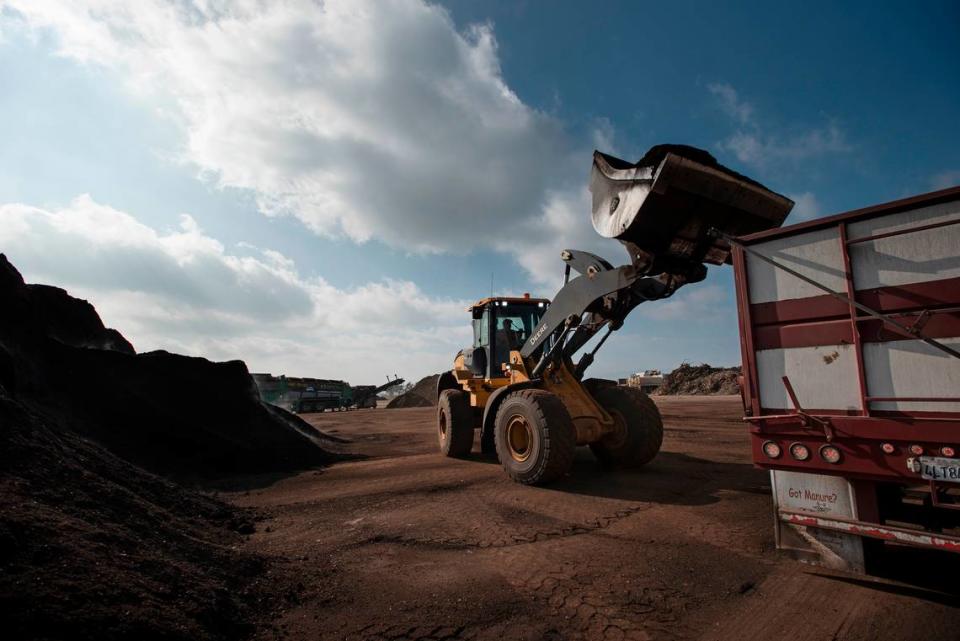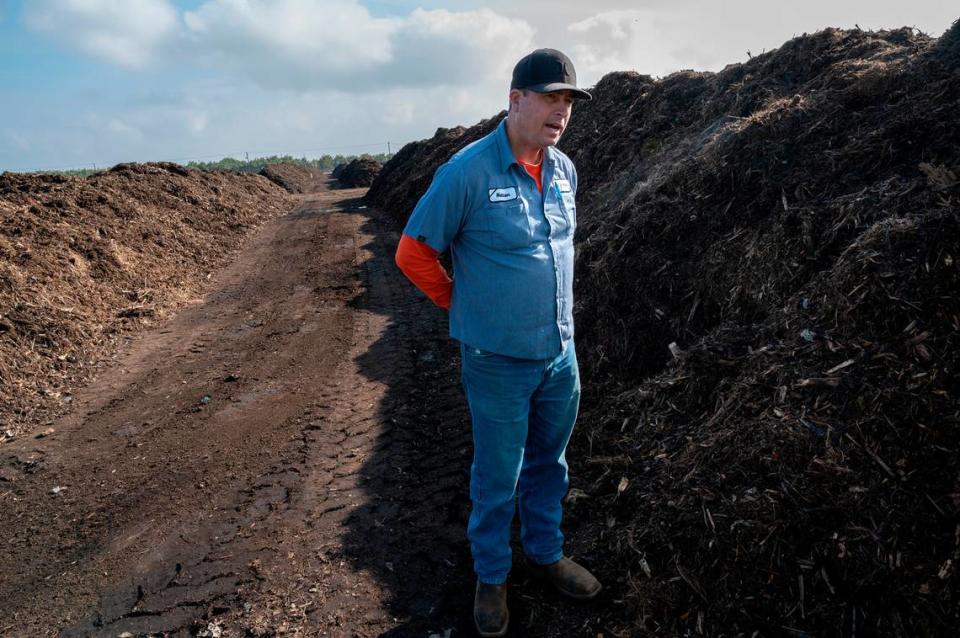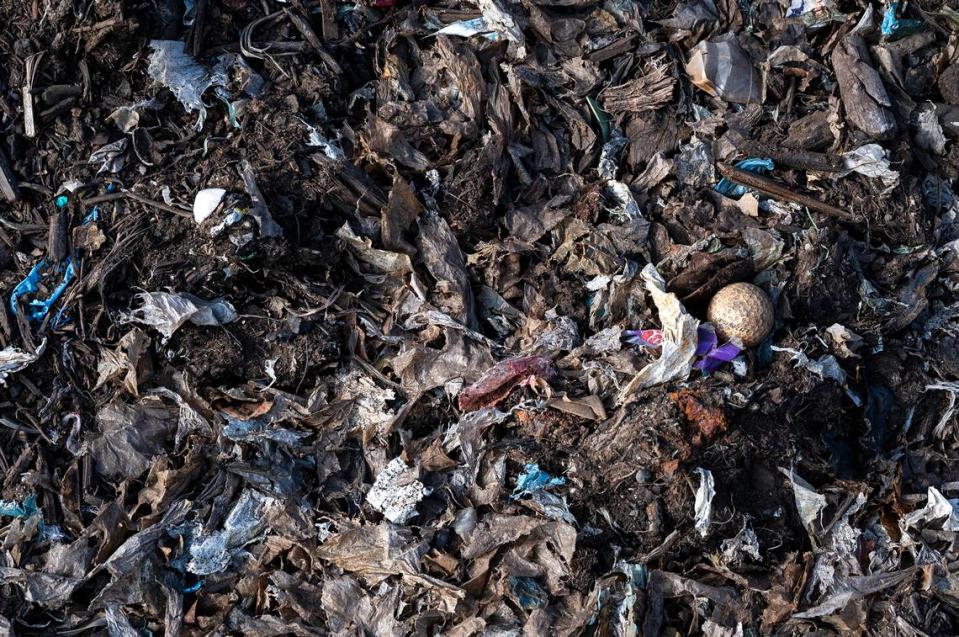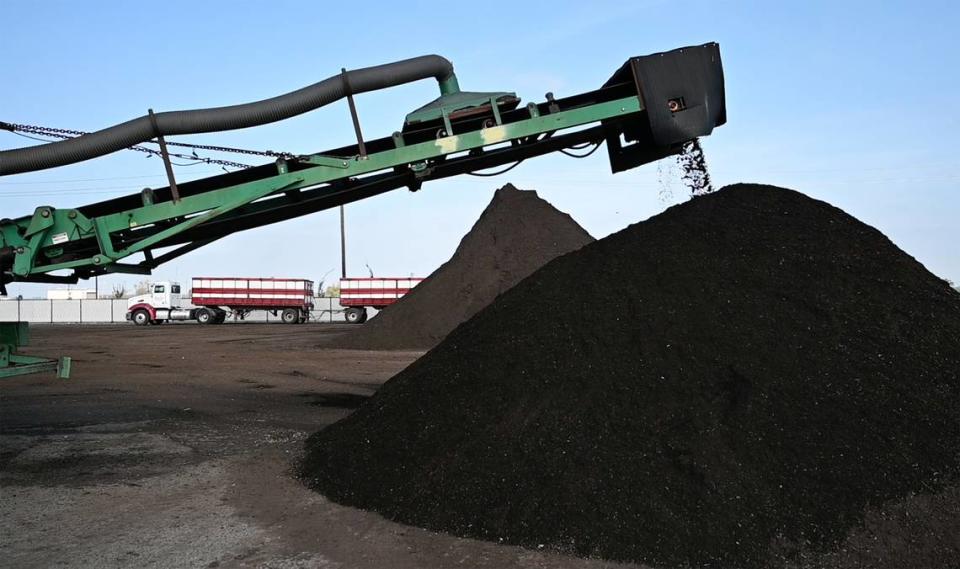Trash bills will likely jump in much of Stanislaus. It has to do with climate change
Many Stanislaus County residents can expect hefty increases in their garbage rates to comply with a state law on organic waste.
The measure requires diversion statewide of at least 75% of yard trimmings, food scraps, paper and other materials from landfills by 2025. It seeks to reduce methane emissions from decaying waste, which contribute to climate change.
The law will likely mean expansion of composting sites that already convert much of the waste for use in farm and home garden soil. It’s a fairly simple process, but it entails trucking and other costs, especially in rural areas.
City councils in Ceres and Hughson have already voted to roughly double garbage bills over several years. Oakdale and Waterford have upcoming hearings that could result in about $11 to $12 per more month in 2022, followed by annual inflation adjustments.
Modesto, Turlock, Riverbank and Newman are still assessing the cost to ratepayers. Information on Patterson was not available.
The biggest impact could be in the unincorporated areas governed by the Stanislaus County Board of Supervisors. It has set a Dec. 14 hearing on rate increases that range from about $13 to $29 for the four service zones n 2022. Residents of rural areas close to Turlock would pay the most.
The law has one advantage: The county can seek exemptions for census tracts with fewer than 75 people per square mile. This includes most of the farm and ranch land.
Local governments can raise utility bills only after going through the process under state Proposition 218. A plan would die if a majority of customers protested by mail or in person. That rarely happens, given that people OK with the idea don’t have to do anything.
Tough on low-income residents
Large rate increases would burden low-income residents, said Bianca Lopez, co-founder and project director at the nonprofit Valley Improvement Projects. She spoke at the Nov. 9 meeting of the Modesto City Council.
But Lopez also cited benefits of the state law and urged the city to work toward a “zero waste” goal. This would mean no longer burning garbage to generate electricity at the plant that opened in 1989 next to the Fink Road landfill on the West Side, she said.
“... we can make more green jobs if we don’t burn our waste and we properly dispose of our waste and reduce our waste in good faith,” Lopez said.
The mandate comes via Senate Bill 1383, enacted in 2016. It added residential organics to waste reduction efforts that started in the 1970s with recycling of metal, glass and paper.
Climate activists say methane is among the worst of the gases that have built up in the atmosphere. Some of it also comes from dairy farms, which are moving toward better practices in Stanislaus County and beyond.
The state already requires organic waste reduction at larger grocery stores, restaurants and certain other generators. The law also seeks to divert edible items to food banks.
Local governments have a Jan. 1, 2022, deadline for enacting new residential rules but can seek extensions. The law set a goal of 50% diversion in 2020 in advance of the 75% requirement in 2025.
Some residents also might see changes in the number of trash cans they set out. Cities could have as many as three – for organic waste, recyclables and everything else.
Modesto has composted since 1997
Modesto officials take pride in a site that has composted organic waste for nearly 25 years. It is along Jennings Road, about five miles southwest of town.
The Modesto Bee got a mid-November tour from Nathan Gorth, supervisor of the eight-employee operation. The raw material is dropped off by trash haulers, park maintenance crews and individuals.
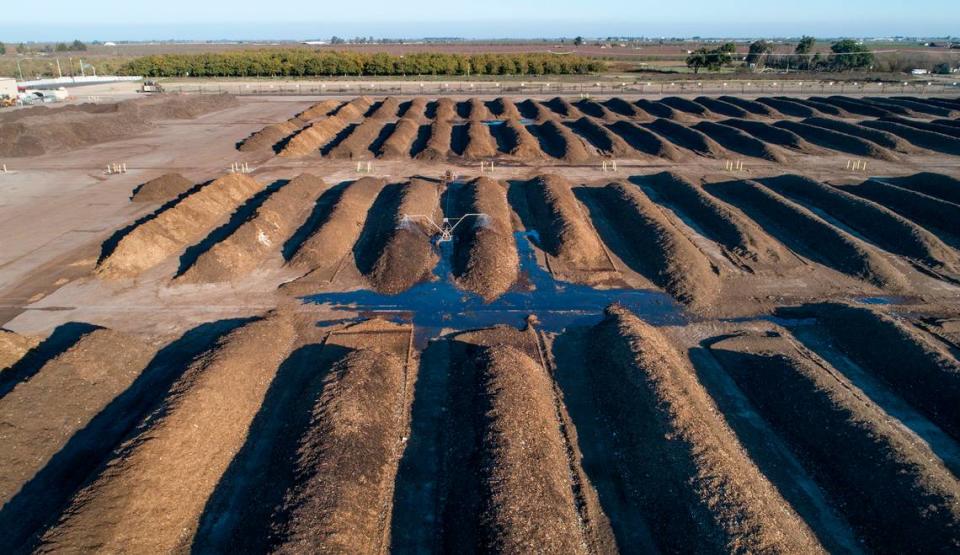
The process starts with grinding the branches and other material into smaller pieces. They then sit in piles about 10 feet tall for three months, as microbes break the waste down.
The workers turn the piles at certain times to aerate them, and they also add water. The interior gets as hot as 150 degrees as the material breaks down into a blackish, crumbly substance. The city sells the finished product under the Mo-Go-Pro label.
The compost can have no more than 1% foreign material under the state permit for the facility. The city counts on residents to not put plastics, metals or other contraband in their green bins.
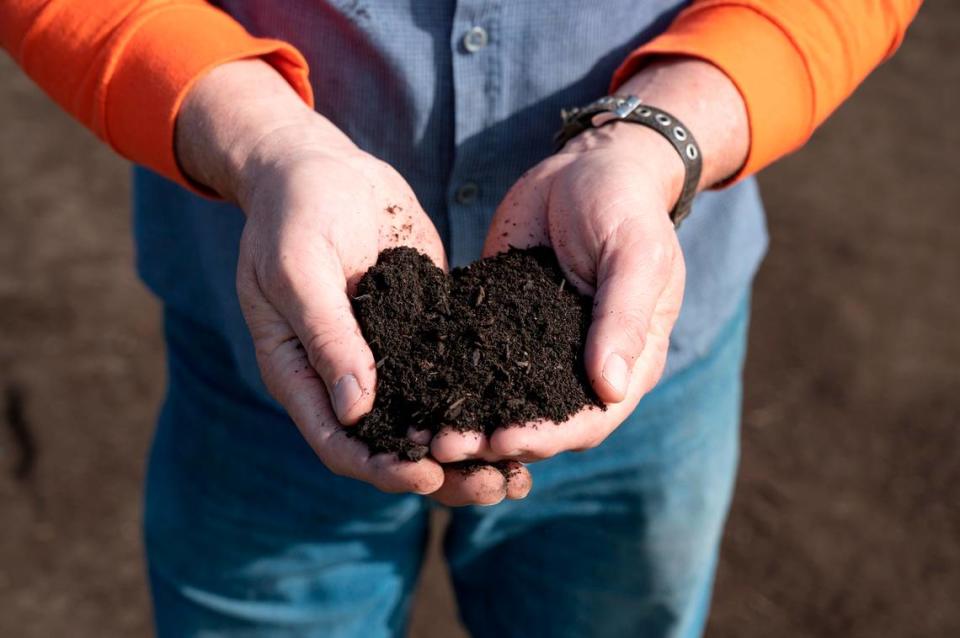
“That can be a shoe, a golf ball, a toothbrush ...,” Groth said of what he has seen over the years.
The site handles about 55,000 tons of waste annually but has a capacity for 130,000. It will be a key part of a report expected by year’s end from Modesto’s consultant on the organic waste mandate.
“We’re lucky,” said Karin Neep, integrated waste manager for the city. “There are so many (California) cities that are scrambling because they have no place to take their material.”
Trash haulers brace for changes
The state diverted about 32% of the 19 million tons of organic waste generated as of 2017, according to the California Department of Resources Recycling and Recovery.
Reaching 75% will mean more composting of landscaping debris, already a major enterprise. And it will require larger increases for food, paper, lumber and other material.
Turlock Scavenger has composted since 1992 as part of a three-can system, said an email from Jesse Marchant, outreach and compliance coordinator. It is exploring with the city what it will take to meet the state law.
“With all unfunded mandates ordered by the state there’s always that question about an increase in cost,” Marchant said.
Gilton Solid Waste Management serves several cities and rural areas from its Oakdale headquarters. It is already expanding its composting operation to reach the interim 50% threshold, said an email from Tracy Norris, who handles corporate communications.
“Gilton will then expand and adjust their equipment and processing as needed based on waste characteristic studies and have those elements in place to be able to divert organics at levels required to meet the 75% target by 2025,” she said.
Gilton also is planning a system that will better separate glass, plastic and other recyclables from the regular trash containers. This will allow it to avoid adding a third can.
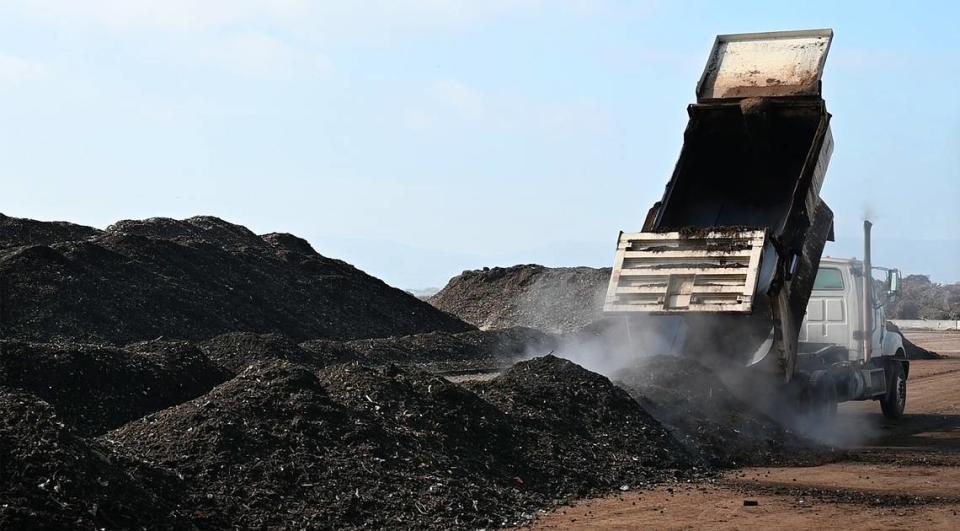
What each city plans
A rundown of approved and pending rate increases for residential customers:
Ceres: The City Council voted in October 2020 to raise rates for Bertolotti Disposal. The monthly charge had been $16.44 or $21.16, depending on the size of the regular trash can. It will rise annually until reaching $31.75 or $37.06 by 2025.
Hughson: The council voted Monday, Nov. 22, to raise Gilton’s basic fee of $23.41 a month to $35.02 as of Jan. 1. It could reach as much as $43.07 by 2030 with inflation adjustments.
Oakdale: Gilton would add $10.72 for organic waste handling to the current monthly fees of $19.73 for a smaller main can or $24.93 for a larger one. The new rates have a Dec. 6 hearing and would take effect Jan. 1. The hauler could petition for further increases over the seven-year contract.
Waterford: Gilton’s monthly charge would go from $23.05 to $35.01 if approved at a Jan. 6 hearing. It would take effect Feb. 1, followed by annual inflation adjustments.
Modesto: The city staff is waiting on the consultant’s report before setting possible rates. Gilton and Bertolotti serve different neighborhoods.
Turlock: The city staff is still working with Turlock Scavenger Co. on the cost of the mandate.
Riverbank: The hearing will be in early February or later, following a rate study, City Manager Sean Scully said by email.
Newman: It is still looking into its options on the organic waste mandate, City Manager Michael Newman said by email.
Biggest hikes would be outside cities
The Dec. 14 hearing before county supervisors will deal with garbage service in four zones outside city limits. Details for residential customers:
Area 1 ( including land around Salida, Keyes, Crows Landing, Grayson and Westley): Bertolotti seeks a $15.99 increase, to $43.90, as of Jan. 1. Future years could bring adjustments for inflation and other costs.
Area 2 (including a small area southwest of Modesto and a larger one in northeast Stanislaus): Gilton would add $12.98 a month, bringing the bill to $35.92, starting Jan. 1. Future years could have adjustments for inflation and other costs.
Area 3 (including a large expanse stretching northeast from Turlock and a small one west of Modesto): Turlock Scavenger would get $25.47 more a month, or a total of $51.91, as of March 1.
Area 4 (surrounding Turlock): Residents would pay $29.25 more a month to Turlock Scavenger, for a total of $53.64 as of March 1.
